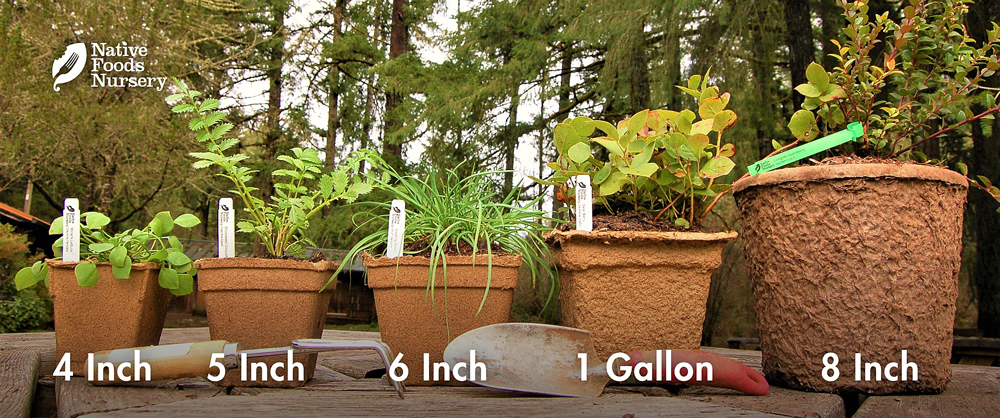Chocolate Lily
- Current Stock:
- 0
- Other Names:
- Rice Root, Checker Lily
- Latin Name:
- Fritillaria affinis var. affinis
Chocolate Lily or Rice Root, is a rare and beautiful Western wildflower with purple-mottled flowers, whorls of lance-shaped leaves, edible immature seed-pods, and a sweet, edible bulb.
NOTE: Our native lillies naturally go dormant by June or July of each year. If you order them after that time, you'll have to wait until spring for additional growth and flowers.
Edible Uses
Bulblets have the appearance of small rice kernels, hence the name “rice root”. Cooked bulbs have a smooth creamy texture and sweet and mild taste (sometimes a bitter taste is reported, but we haven’t found that). This native food was a closely managed and important traditional food crop in the region.
Lily bulbs have been used medicinally/nutritionally in many cultures for thousands of years. They contain a variety of substances that can promote health and well-being. In addition to proteins and carbohydrates, lily bulbs have small amounts of calcium, iron, phosphorus, and vitamins B1, B2 and C.
Ornamental Qualities
The ornamental value of these delicate wildflowers is undeniable to anyone who is lucky enough to find the Chocolate Lily (Rice Root) flowering in a Spring meadow. Mature bulbs send up bunches of dark purple flowers two feet high, with beautiful whorls of lance-shaped leaves green leaves. Flowers hang downward in a delicate fashion, petals peeling back slowly to reveal dark pollen-coated stamens visited by native butterflies.
This ephemeral Spring beauty is truly a sight to behold. Similar in appearance to the Tiger and Leopard lillies, but with darker flowers, a shorter stem, and a slightly earlier flowering time.
Environment and Culture
Native to the West, Chocolate Lily's wild home is in prairies, grassy bluffs, and open forests. However, due to habitat loss and overcollection, the Chocolate Lily’s population is declining and should never be harvested from the wild. These lilies are slow-growing, long living, and very easy to care for. They die back every Summer, during which period they should be kept unwatered, if possible. They emerge from a rhizomatous stock of bulblets the following Spring.
However, it is not just humans that like the taste of this wildflower bulb, so if you have gophers or mice, it is best to protect your bulb with hardware cloth or grow it in a container. Also, protect young shoots in the Spring from slugs or rabbits.
Northwest Native American tribes today still value this special plant as food, medicine, and family. Despite great cultural losses, they continue to work towards stewarding and restoring wild populations, both strengthening the integrity of the ecology and sustaining their cultural heritage and wisdom. These strong and recovering peoples and plants deserve our respect, gratitude, and reparations. (Learn more & how to help on our Charitable Giving page.)
Harvest, Care, and Preparation
Chocolate Lily can be allowed to spread and multiply before harvesting. Seed can even be collected and reseeded next to the mother plant. When ready to harvest, in late Summer, use the dead flower stalk locate the edible bulbs underneath. Take some, leave some. If there are few, then consider removing an outside bulb scale and replanting it in the same hole at a shallower depth (to grow another for the following year).
(The bulb pushes itself deeper as it grows, and can be up to 6 inches down when fully mature. Wet the ground before digging to make the soil softer and easier to turn. Give ample space around the bulb to ensure that it or its bulblets are not severed.)
To prepare, slice the roots from the bulb (as you would a green onion) and boil the bulb for 15-20 minutes (until soft but still firm), Then, they can be eaten whole, mashed, or sliced and pan-fried. Cooked bulbs have a smooth creamy texture and sweet and mild taste. Immature seed pods can be eaten raw or cooked, but can have a bitter flavour. Enjoy this special, native treat!
Native Range: WA, OR, CA, ID, BC
USDA zones: 4-8
Ease of Care: Very Easy
Deer Resistance: Moderate
Light Requirements: Full Sun
Soil Type: Well-drained, high organic matter, slightly acidic
Water Requirements: Dry to Moist, dry during Summer dormancy
Pollination: Self-Fertile
Bearing Age: 4-6 yrs from seed
Size at Maturity: 2 feet
Bloom Time: April/May
Harvest Time: Late Summer
Pot Sizing Guide

Our policy lasts 30 days. If 30 days have gone by since your purchase, unfortunately we can’t offer you a refund or exchange. To be eligible for a return, your item must be unused and in the same condition that you received it. It must also be in the original packaging. Gift cards are non-refundable. Once your return is received and inspected, we will send you an email to notify you that we have received your returned item. We will also notify you of the approval or rejection of your refund. If you are approved, then your refund will be processed, and a credit will automatically be applied to your credit card or original method of payment, within a certain amount of days.








